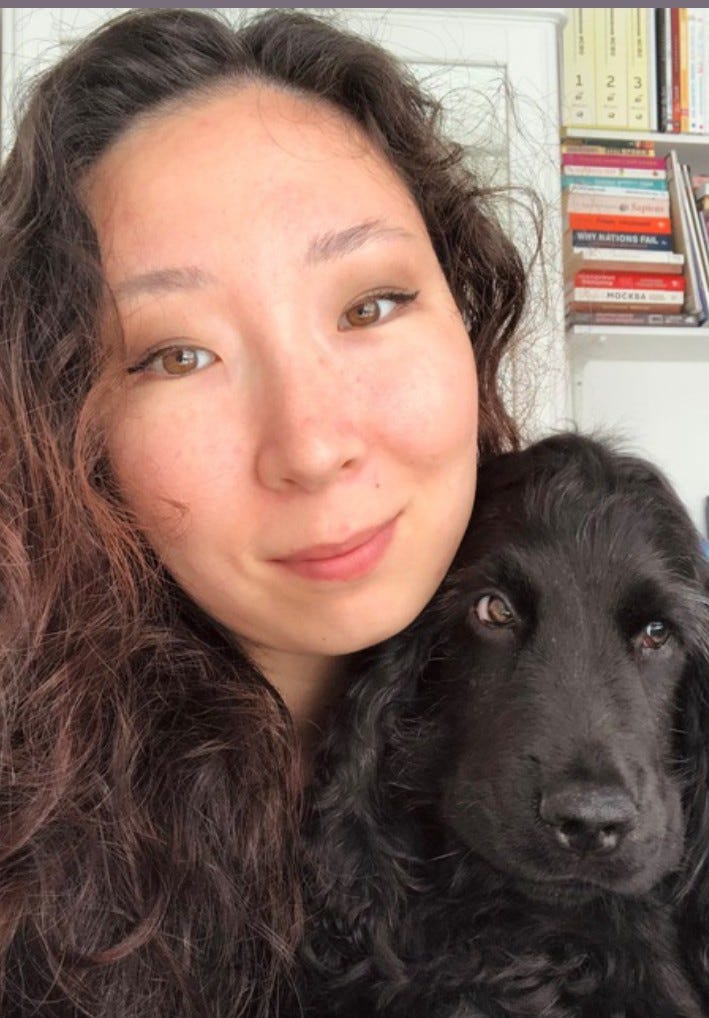
I’ve mentioned in previous postings, I’m noting a lot more ethnic diversity on this visit to Russia than I have in the past. True, I think I’ve encountered Gypsies on every trip I’ve made here up to now. And seeing various central Asian peoples and folks originating from Caucasus countries is not new, though the latter sometimes are less obvious to me since they tend to be lighter-complected than those of central Asian descent and sometimes need to be pointed out.
But during this visit I seem to be seeing a lot more of the ethnic diversity that constitutes the Russian Federation. That may well be, not because there are comparatively more to be seen now, but because this visit has been much more lengthy than any previous one I’ve made (my previous record was a 2.5 month stay in 1995).
On this trip, I’ve actually been able to meet and even befriend a couple of people from smack dab in the middle of Russia, slightly to the south. These are an ethnic group that many Americans might be likely to identify—because of their facial characteristics and eye shape—as being oriental. For example as Chinese or Japanese. At least that was what I assumed might be their ethnic extraction when I first saw them.
Fairly early on, for example, we met a girl at an English club who, at first glance, I decided was Japanese. We sat together with her and quickly found out that she had a pretty good command of English. When I inquired as to where she hailed from, she told me she was from an area in the center of Russia, a republic called Buryatia. I knew at least a little about the region since I’m interested in stories about recovery of Ice-Age remains of animals, some of which have been found in Buryatia. I also knew that a lot of Mammoth ivory that survives to the present day has been found in this region. Though we spoke only for about an hour with this young lady, I could at least finally say that I had met someone who hails from that region.
At another English-speaking club where I’ve played a more active role, we met another young lady with oriental-looking facial features with whom we’ve established a friendship. She, it turns out, is from a neighboring region immediately to the west of Buryatia called the republic of Tuva. We’ve gotten to know more about her homeland as we’ve visited with her and posed various questions. Though her command of English is pretty good we communicate with her in both Russian and English.
This region is located in what is sometimes called in English sources “outer Mongolia.” Modern day Mongolia is located immediately to the south. Tuva and members of its ethnic sub-group that live in adjacent regions actually constitute a fairly small community of under one million, the total population of the Tuva Republic currently standing at a little under 350,000. The Tuvan language, which differs considerably from Russian, is a Turkic language.
In terms of religion, although a majority of the population adheres to Buddhism, traditional shamanism is still alive and well. There is a small presence of Orthodox Christianity there as well, one that includes a few Old Believer communities.
Our fried Z. seems somewhat unique with respect to her ethnic identity in that she grew up speaking Russian and is not able to converse in or comprehend very well the Tuvan language. She mentioned to us that her countrymen are a bit taken aback by this because they expect, when seeing someone that seems otherwise homogenous with their ethnicity, that this person will understand when they begin speaking Tuvan to them.
Z. has experienced some discrimination here in Russia because of her pronounced Asian appearance. So, even though her Russian is perfect, it being her native language, she feels she does not fully fit in to Russian culture. As an example, she informed us that, were she to try and rent an apartment in this area of St. Petersburg (called “Moskovskaia Zastava”)—as perhaps as well in other parts of the city—she would have a hard time getting someone to rent to her because of her non-Slavic appearance. For that reason, she and her mother wound up buying an apartment for her here, as this was somehow more feasible.
In terms of religion, Z. seems to identify to some extent with shamanism. When I asked whether she feels any lack while living here in St. Petersburg at being unable to consult with a shaman she said she does not. At the same time, she said that when she goes back to Tuva to visit, she does visit the shaman.
Her homeland, though surrounded by the beauty of nature, is evidently fairly lawless. She mentioned to us that the murder rate there, for example, is quite a bit higher than in other regions of Russia.
And, in case you were wondering, no, Z. did not grow up in a yurt and she did not ride a yak to school while she was growing up. She lived in the capital, called Kyzyl. And in the event that any of the readers of this blog might develop romantic inclinations toward Z. based on the evident cuteness of her face, you should be aware in advance that she has a sticker on her phone case that reads “I need money, not boys.” In short, this is a young lady that means business.

I will close by noting something that became evident to me after meeting Z. and contemplating her facial features, namely, that this Siberian ethnic group seems to share a lot of physical characteristics with American Indians. According to modern anthropological theories regarding human migration to the New World, her ancestors were likely among those who crossed the Siberian land bridge some thousands of years ago, their descendants peopling the North American continent.



